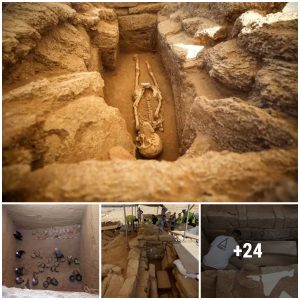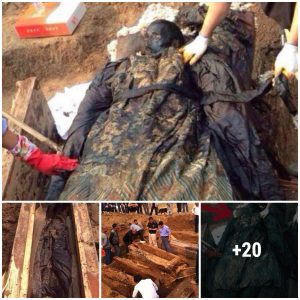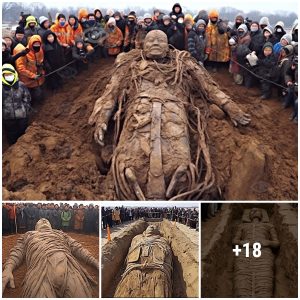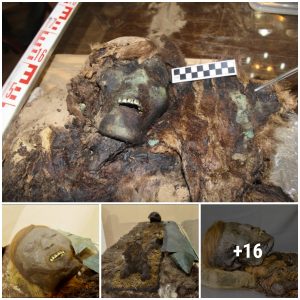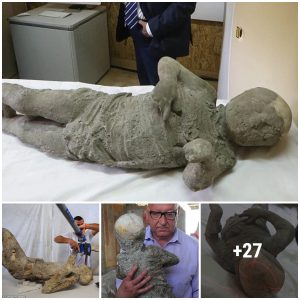The oldest known gold artifacts are located on the necropolis in Varna, a cemetery from 4,560-4,450 BC on the Bulgarian Black Sea coast.
Internationally considered one of the most important prehistoric archeological sites in the world, the necropolis of Varna (also called the Varna Cemetery) is an important cemetery in the western industrial zone of Varna. It comes from the period of the chalcolitic (copper period) of Varna culture, which existed about 6,000-6,500 years ago.

So far, a total of 294 tombs with about 3,000 gold artifacts have been discovered in the necropolis of Varna, according to the Archeology of Bulgaria. Although many elite tombs have been discovered, there is one that stands out among the others – Tomb 43. Archaeologists have discovered the remains of a tall man who looked like a ruler or leader.
The golden treasure in Varna was accidentally discovered in 1972 during the construction of a tin factory on site, when a 22-year-old excavator operator named Raycho Marinov dug up several artifacts and collected them in a shoe box. and brought him to his house. . A few days later, he decided to contact some local archaeologists and let them know about the discovery.

Subsequently, a total of 294 calcolithic graves were excavated in the necropolis. Using radiocarbon dating, the tombs of the Copper Age, where the golden treasure of Varna was found, date back to 4,560-4,450 BC.
All these strange treasures are the product of ancient European human civilization, which developed during the Neolithic and Chalcolithic period in present-day Bulgaria and the rest of the Balkans, the Lower Danube, and the west coast of the Black Sea. Some scholars call this prehistoric civilization “old Europe.”
Discoveries from the necropolis suggest that Varna’s culture had trade relations with remote areas of the Black Sea and the Mediterranean, and that rock salt was probably exported from Provadiya-Solnitsata (“Salt Well”). Archaeologists also believe that the seashells of the Mediterranean mollusk Spondyla found in the tombs of the necropolis of Varna and other chalcolitic sites in northern Bulgaria were probably used as a type of coin in this ancient culture.

Because many of the discovered tombs contain large amounts of gold, archaeologists also believe that the Balkan Peninsula (southeastern Europe) has had the form of a state and a royal institution since the Copper.
The Gold Treasure brewery contains more than 3,000 gold artifacts divided into 28 different types with a total weight of 6.5 kilograms.
As mentioned above, one of the most interesting inventories was found in grave no. 43, which was excavated in 1974 in the central part of the necropolis in Varna. (It is said to be 1.70-1.75 meters or 5 feet 6-8 inches tall). More than 1.5 kilograms of all gold objects were found in his tomb, which is why archaeologists believe that he was buried as a prominent member of his community, probably a monarch or king.
Gold items include 10 large applications, a large number of rings, some of which hang on strings, two necklaces, chains, something like a gold phallus, gold bow ornaments, a stone ax and a copper ax with gold. ornaments such as bows with gold applications.
In another tomb explored on site, Tomb No. 36 – a symbolic tomb – archaeologists found more than 850 gold items including a tiara, earrings, necklace, belt, bracelet, breastplate, gold scepter with hammer, gold model. in one pruning, two gold bars representing animals and 30 models of horn heads.
The objects were found covered with a gold-wrapped cloth that lined the outlines of the human body with numerous artifacts on the right, indicating that the tomb had a male burial mound. Gold artifacts were once interpreted by archaeologists as royal insignia.
Similar “royal” graves are also found in graves no. 1, 4 and 5 in the chalcolitic necropolis in Varna. Many finds from the Varna chalcolitic necropolis are seen as a celebration of the role of the blacksmith, who as the creator replaced the role of the Great Mother and transformed the matriarchal world into a patriarchal world.
In calculus culture, the position of carpenter was comparable to that of king, because metal was a symbol of the state rather than an economic means at the time.
About 30% of the rugged area of the necropolis has not yet been excavated.
